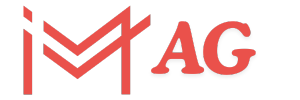Contents
Introduction: The Rise of Symley
Welcome to the universe of Symley – a concept that has been causing ripples across various sectors with its disruptive approach and innovative structure. In this comprehensive guide, we delve into the intricacies of Symley, exploring its definition, impact, and the factors that make it a revolutionary force.
This article aims to surpass existing online sources by offering in-depth interpretations, analyses, and insights. Whether you’re a business leader, a tech enthusiast, or simply curious about cutting-edge trends, this guide will provide a detailed understanding of Symley and its potential implications.
What is Symley?
Defining Symley: A New Paradigm
Symley is more than just a buzzword; it represents a flexible and innovative structure that is reshaping various affiliations. At its core, Symley embodies a new paradigm of organization and interaction, leveraging cutting-edge technologies and dynamic frameworks to drive significant changes across industries.
The term “Symley” is derived from the idea of synergy and flexibility, combining elements that create a unique, adaptable system. Unlike traditional models, Symley emphasizes fluidity and responsiveness, allowing organizations and individuals to adapt quickly to changing environments and demands.
Historical Context and Evolution
To understand Symley fully, it’s essential to explore its historical context and evolution. The concept of Symley emerged from a need to address the limitations of conventional structures in a rapidly changing world. Traditional models often struggle with rigidity and slow adaptability, which can hinder progress and innovation.
Symley addresses these challenges by introducing a structure that is inherently flexible and responsive. Its evolution has been driven by advances in technology, changes in consumer behavior, and the increasing complexity of global interactions. As industries face new challenges and opportunities, Symley offers a framework that can evolve and adapt in real-time, providing a competitive edge and fostering innovation.
The Core Principles of Symley
Flexibility and Adaptability
One of the fundamental principles of Symley is its emphasis on flexibility and adaptability. Unlike rigid systems, Symley structures are designed to be fluid, allowing organizations to respond swiftly to changes and new opportunities. This adaptability is achieved through modular design, where components can be easily reconfigured or replaced based on current needs.
Innovation and Technology Integration
Symley leverages advanced technologies to drive innovation and efficiency. By integrating cutting-edge tools and platforms, Symley enables organizations to streamline operations, enhance productivity, and foster creativity. The use of technologies such as artificial intelligence, machine learning, and data analytics is central to Symley’s approach, providing valuable insights and facilitating smarter decision-making.
Collaboration and Synergy
Collaboration is another key principle of Symley. The structure promotes synergy among various stakeholders, including employees, partners, and customers. By fostering a collaborative environment, Symley enhances communication and coordination, leading to more effective problem-solving and innovation. This collaborative approach also helps build stronger relationships and trust among stakeholders, contributing to overall success.
Scalability and Growth
Symley is designed with scalability in mind, allowing organizations to grow and expand seamlessly. The flexible structure can accommodate increasing demands and evolving needs, ensuring that organizations can scale their operations without facing significant obstacles. This scalability is crucial for businesses looking to adapt to market changes and seize new opportunities.
The Impact of Symley on Various Sectors
Technology and Innovation
In the technology sector, Symley is driving significant advancements by enabling rapid experimentation and iteration. The flexible structure allows tech companies to develop and test new products and services quickly, reducing time-to-market and increasing competitiveness. Additionally, Symley’s emphasis on innovation and technology integration helps companies stay at the forefront of emerging trends and technologies.
Business and Management
For businesses, Symley offers a new approach to management and organizational design. The adaptable structure supports dynamic workflows and decentralized decision-making, empowering teams to act quickly and efficiently. This approach can lead to improved agility, faster response times, and a more innovative organizational culture.
Healthcare and Education
In healthcare and education, Symley is transforming traditional models by introducing more flexible and responsive systems. For example, in healthcare, Symley can enhance patient care by facilitating better coordination among healthcare providers and enabling personalized treatment plans. In education, Symley’s adaptable framework supports diverse learning needs and personalized instruction, leading to improved outcomes and engagement.
Finance and Investment
The finance and investment sectors are also experiencing the impact of Symley. By integrating advanced technologies and promoting innovative approaches, Symley helps financial institutions streamline operations, enhance risk management, and develop new investment strategies. The flexible structure allows for more agile responses to market fluctuations and changing economic conditions.
Case Studies: Symley in Action
Case Study 1: Tech Startups Embracing Symley
A leading tech startup adopted Symley principles to revolutionize its product development process. By leveraging modular design and advanced technologies, the company was able to rapidly prototype and test new features, leading to faster product launches and increased market share. The flexible structure also allowed the startup to quickly pivot in response to customer feedback and emerging trends.
Case Study 2: Healthcare Provider Enhancing Patient Care
A major healthcare provider implemented Symley to improve patient care and operational efficiency. The adaptable framework facilitated better coordination among healthcare teams, leading to more personalized treatment plans and improved patient outcomes. The integration of advanced technologies also enhanced data analytics capabilities, enabling more informed decision-making and better resource allocation.
Case Study 3: Educational Institution Adopting Symley for Personalized Learning
An educational institution adopted Symley principles to create a more personalized and adaptive learning environment. The flexible structure supported diverse learning styles and allowed for tailored instruction based on individual student needs. The integration of technology also enabled more interactive and engaging learning experiences, leading to improved student performance and satisfaction.
Challenges and Considerations
Implementing Symley: Potential Obstacles
While Symley offers numerous benefits, its implementation can present challenges. Organizations may face difficulties in transitioning from traditional models to the flexible structure of Symley. This transition requires careful planning, change management, and a willingness to adapt to new ways of working.
Balancing Flexibility and Structure
One of the key challenges with Symley is finding the right balance between flexibility and structure. While the adaptable framework allows for rapid responses and innovation, it is essential to maintain some level of structure to ensure consistency and alignment with organizational goals. Striking this balance requires thoughtful design and ongoing evaluation.
Ensuring Security and Privacy
Incorporating advanced technologies into Symley systems raises concerns about security and privacy. Organizations must implement robust security measures to protect sensitive data and ensure compliance with regulations. This includes adopting best practices for data encryption, access control, and regular security audits.
The Future of Symley
Emerging Trends and Innovations
As Symley continues to evolve, several emerging trends and innovations are likely to shape its future. The integration of artificial intelligence, blockchain technology, and advanced analytics will further enhance the capabilities of Symley systems, providing new opportunities for innovation and growth.
Expanding Applications and Use Cases
The applications of Symley are expanding across various sectors, with new use cases emerging regularly. As more organizations adopt Symley principles, we can expect to see further advancements in areas such as healthcare, education, finance, and technology. The flexibility and adaptability of Symley make it a powerful tool for addressing complex challenges and driving positive change.
FAQs About Symley
What is Symley, and how does it differ from traditional models?
Symley is a flexible and innovative structure designed to address the limitations of traditional models. Unlike conventional systems, Symley emphasizes adaptability, collaboration, and technology integration, allowing organizations to respond quickly to changes and drive innovation.
How can Symley benefit my organization?
Symley can benefit your organization by providing a more adaptable and responsive framework. It supports dynamic workflows, enhances collaboration, and leverages advanced technologies to drive efficiency and innovation. This can lead to improved agility, faster decision-making, and a more competitive edge.
What are some challenges associated with implementing Symley?
Challenges associated with implementing Symley include transitioning from traditional models, balancing flexibility with structure, and ensuring security and privacy. Organizations must carefully plan and manage the transition, strike the right balance, and implement robust security measures to address these challenges.
How is Symley being used in different sectors?
Symley is being used in various sectors, including technology, healthcare, education, and finance. In technology, it drives rapid innovation and experimentation. In healthcare, it improves patient care and coordination. In education, it supports personalized learning. In finance, it enhances risk management and investment strategies.
What does the future hold for Symley?
The future of Symley is likely to be shaped by emerging trends and innovations, such as artificial intelligence, blockchain technology, and advanced analytics. As more organizations adopt Symley principles, we can expect to see further advancements and expanded applications across various sectors.
Conclusion: Embracing the Symley Revolution
Symley represents a revolutionary approach to organization and interaction, offering a flexible and innovative framework that addresses the limitations of traditional models. By embracing Symley, organizations can drive significant improvements in efficiency, collaboration, and innovation.
As the concept continues to evolve, it will undoubtedly play a pivotal role in shaping the future of various sectors. Whether you’re a business leader, a tech enthusiast, or simply curious about cutting-edge trends, understanding and leveraging Symley can provide valuable insights and opportunities for growth.
This comprehensive guide has explored the core principles, impact, and future of Symley, providing in-depth analyses and insights to help you navigate this dynamic and transformative concept.







